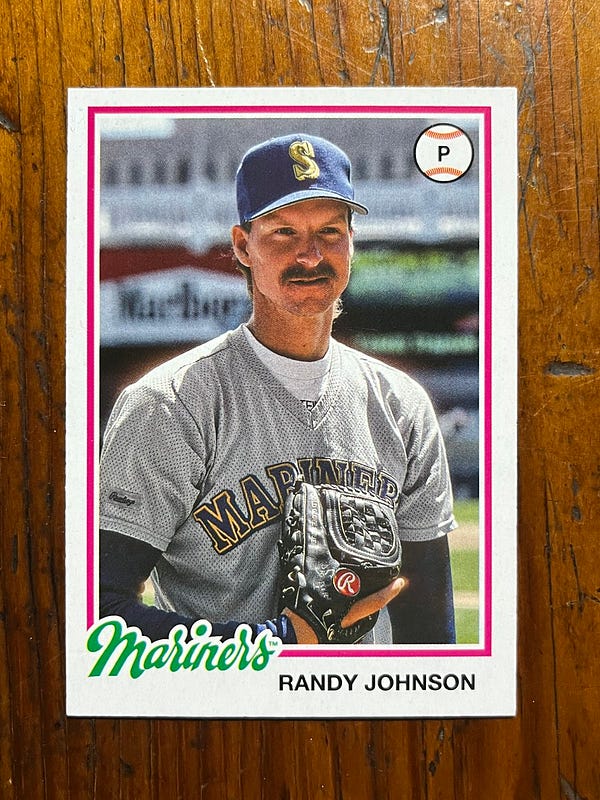Randy Johnson Would Like a Word with 2022 Topps Archives
When you click on links to various merchants on this site and make a purchase, this can result in this site earning a commission. Affiliate programs and affiliations include, but are not limited to, the eBay Partner Network.
Randy Johnson’s Rookie Cards made their way into products in 1989. A young hurler with the Montréal Expos, who would soon be traded to the Seattle Mariners.
Of his seven rookie cards, the most popular is his 1989 Upper Deck. It’s part of an iconic set that put Upper Deck on the map with Ken Griffey Jr.’s rookie card highlighted as card No. 1.
However, Johnson’s 1989 Fleer rookie card is way more interesting.
I was reminded of that card recently when 2022 Topps Archives Baseball came out. Included was a subset featuring draft picks on the 2005 Topps design. A newly drafted Derek Jeter is standing in Yankee Stadium, holding what could be Bernie Williams’ bat. Over his left shoulder and below the Yankee Stadium frieze is an in-your-face ad for Marlboro.
Randy Johnson’s 1989 Fleer card also had a Marlboro billboard, but you may not have realized it. The ad had been airbrushed out and more than 10 variations of this card exists, showcasing the different ways Fleer tried to remove the ad from the photo.
Similarly to the iconic 1989 Fleer Billy Ripken card, which has several variations including the one that escaped with “F*ck Face” on the knob of the bat.
Why did Johnson’s card get the special airbrush treatment?
An article in The Miami Herald (Nov. 19, 1999) speculated it’s because the league asked Fleer to take out the ads in the background. But obviously not all ads were treated equally.
Coke still made the cut.
Tobacco was already drawing the ire of the government. In 1971, TV and radio were banned from airing cigarette advertising. That didn’t include billboards, yet. That ban didn’t go into effect until 1998.
But it would make sense MLB would request cigarette advertising to be removed from cards at the time since the criticims regarding nicotine were gaining steam — especially the tobacco companies’ advertising toward children.
Baseball cards were still heavily favored by children in 1989, even though many adults were hoarding those 1989 Upper Deck cases for future college funds.
It’s interesting that Marlboro managed to make its way back on to a card more than 30 years later, given the lengths Fleer went to remove the sign in 1989.
Would kids who see today’s Jeter card even know what Marlboro is? There’s a good chance since cigarettes are still prevelant, but there may be some questions.
Update: Looks like the Randy Johnson also has a Marlboro sign on it.



Have any burning questions about the hobby or industry? You can reply to this email or fill out this form.
Was this email forwarded to you? Subscribe to Card Chat here!




